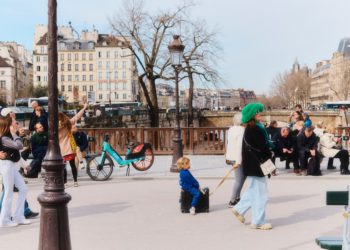Two former dancers for Shen Yun Performing Arts, the traditional Chinese dance company, filed a lawsuit on Thursday accusing the group of amassing a financial fortune and worldwide renown by subjecting an “army of child laborers” to brutal working conditions and psychological coercion.
The lawsuit by the former dancers, Sun Zan and Cheng Qingling, is at least the second civil action targeting the group and its leaders since The New York Times last year detailed the treatment of performers and financial practices at the arts company, an arm of the Falun Gong religious movement.
Federal criminal investigators have also been examining possible visa fraud at Shen Yun, and New York State has been investigating the group’s compliance with labor laws.
Advertising a glimpse into “China Before Communism,” Shen Yun performs hundreds of shows a year featuring acrobatic routines by performers in billowy outfits. The group also serves as a messaging platform for Falun Gong, promoting the teachings of its founder, Li Hongzhi, and portraying the Chinese government, which has banned and persecuted his followers, as evil.
Shen Yun accumulated $266 million in assets by 2023, the lawsuit says, while performers worked up to 15 hours a day in training and on a “crushing” tour schedule for little pay.
“The child laborers were paid generally no more than $500 a month — less than the price of a pair of orchestra seats at this year’s Lincoln Center performance,” according to the lawsuit, which was filed in federal court in Manhattan.
Representatives for Shen Yun and Falun Gong said in a statement that the allegations “are false and present a distorted picture of our organization, our mission, and our faith.”
“We operate with integrity and are committed to upholding the highest artistic and ethical standards,” said the representatives, Ying Chen for Shen Yun and Levi Browde for Falun Gong. They said Shen Yun uses both professional, salaried performers and students following a state-approved curriculum. And they said that a few former performers were spreading a false narrative pushed by the Chinese government while many more performers and their families have defended Shen Yun.
Mr. Sun and Ms. Cheng, who married after leaving Shen Yun and now live in New Zealand, were featured in The Times’s coverage. Each had parents who were adherents of Mr. Li, who teaches that people can attain enlightenment in part by following his regimen of meditation and exercises and has implied that he created the universe.
Mr. Li started Shen Yun in 2006 and expanded it rapidly at Dragon Springs, his movement’s 400-acre headquarters located northwest of New York City.
The suit describes Mr. Li as “the mastermind of the entire forced labor scheme,” naming him as a defendant along with his wife, Li Rui, and two schools that Mr. Sun and Ms. Cheng say were used to create the “pretext” of educating performers. Ms. Chen and Mr. Browde said the schools provide a quality education and their students excel.
The lawsuit accuses Shen Yun of forced labor, human trafficking and other violations of the Federal Trafficking Victims Protections Act, seeking damages for physical and psychological injuries. One of the former dancers’ lawyers, Carol Merchasin, has specialized in cases involving abuse in religious and spiritual communities.
Mr. Sun was sent by his parents across the world to Dragon Springs at 15; Ms. Cheng arrived at 13. Their suit described the high-fenced compound as akin to “a penal colony,” with performers confined there through psychological and physical control and their passports locked in a safe. Representatives for the groups said holding passports for safekeeping is normal at boarding schools, and they are returned upon request.
Performers had a “dreadful existence” of six-day work weeks full of training and religious practice, the suit says, and just two or three hours of classroom time per day. Instructors allowed Mr. Sun to cheat on exams and sleep in class because of the priority given to training, the suit says.
Humiliation and violence were commonplace, the suit says: “A late-arriving child laborer could expect to have an instructor’s shoe strike their head moments after walking in.” They were told such treatment “was an indication of talent, and so they should be thankful for being beaten.”
Leaders instilled fear by shaming rule-breakers at schoolwide assemblies. Around 2011, a school principal berated Ms. Cheng’s roommate for looking at pornography when she had actually been reading Japanese comic books known as manga, the lawsuit says.
Like other performers, Mr. Sun and Ms. Cheng said they performed through injury and without medical treatment. Mr. Li teaches that only faith can purge the body of illnesses.
Mr. Sun suffered internal bleeding when an instructor told other students to force him into a side split; he had to hold that position for 10 minutes a day for three months and has scarring on his legs, the suit says.
After Ms. Cheng suffered a training injury that made her left arm go numb, Mr. Li ordered a school principal to meditate with her rather than arranging treatment; she has permanent damage to her shoulder, the suit says.
Michael Rothfeld is an investigative reporter in New York, writing in-depth stories focused on the city’s government, business and personalities.
The post An ‘Army of Child Laborers’ Enriches Shen Yun, Ex-Dancers Say in Suit appeared first on New York Times.




